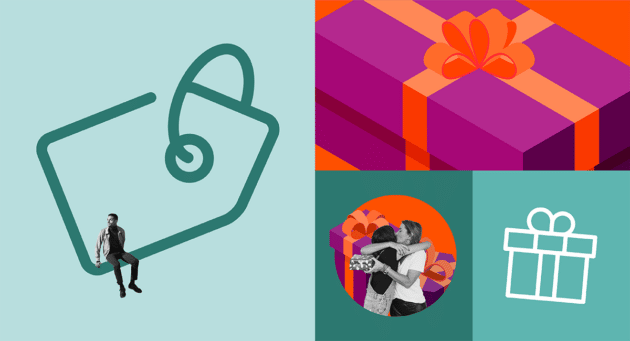When luxury retailer Neiman Marcus wanted to streamline merchandising processes across ecommerce and physical store locations, data centralization was the first step. The team developed an app that allowed buyers to view, plan, and purchase from entire collections as well as communicate with each other for a unified view of purchases across all locations. This resulted in a 40% increase in productivity and a 30% decrease in time-intensive buying appointments.
Nowadays, most companies are swimming in so much data that it’s hard to actually activate. Data centralization is elusive. Instead, different teams reach conclusions based on their own data set. That can lead to miscommunication and guarantee that you’ll never a complete view of how shoppers interact with your brand.
Fragmented Data = Fragmented Customer Insights
A report by Forbes Insights and Criteo, “The Commerce Data Opportunity” found that retailers and brands use multiple sources for acquiring customer data, from customer surveys to CRM solutions and customer service transaction records.
In real life it might look like this: you’re sending out great promotional offers to defunct emails, or separate offers to the same email. Or you’re retargeting customers online who’ve already purchased items in-store.
Whatever your marketing frustrations, it’s likely because your marketing team is separate from your customer service team, which is separate from your in-store sales team. Each of these teams works hard to gather customer information to bring in sales, but since all these data streams are separate, the results can be less than stellar.
When your data all over the place, your marketing efforts inevitably will be, too. A disparate view of your customer’s journey translates into a frustrating lack of real-time consumer insights. Teams will have different campaigns, priorities and, ultimately, results.
Platforms for Centralizing Data
We’ve discussed the four pillars of building a data-centric business: people, platforms, partners, and processes. When it comes to data centralization, platforms for gathering all the disparate sources of data should be first and foremost.
As a brand or retailer, you’re looking at metrics coming from web analytics, SKU data, social media, email marketing, and your app, just to name a few.
For most organizations, the first stage in data centralization is the ETL stage: Extraction, Transformation, and Loading. In this step, data is gathered from all your separate sources, cleansed (deduped, sorted, and validated to meet your business requirements), and delivered to the database where you’ll carry out your data-driven business goals.
This stage is crucial and, if done in a slap-dash manner, you’ll be back to square one. The analytics and visualization stages that follow won’t be as accurate or effective as they could be. Some commonly used platforms for the ETL stage are:
- SAS Data Management
- IBM InfoSPhere Information Server Enterprise Edition
- Powercenter Informatica
What these platforms do is help you centralize your data so that anyone in your organization who needs to work with the data can access the various streams from one touchpoint.
Creating Value for Your Customers
You probably have tons of data from your ecommerce, brick and mortar, rewards programs, and other customer-facing channels. These past transactions, when compiled together, can be a powerful predictor of what your shoppers might want in the future.
By connecting all your data dots, you’ll gain a more holistic view of your customers and uncover shopper insights. With these insights, you can adapt your marketing strategies and make your messaging more personal and relevant. For shoppers, this can make all the difference, and turn one-time buyers into loyal customers.














